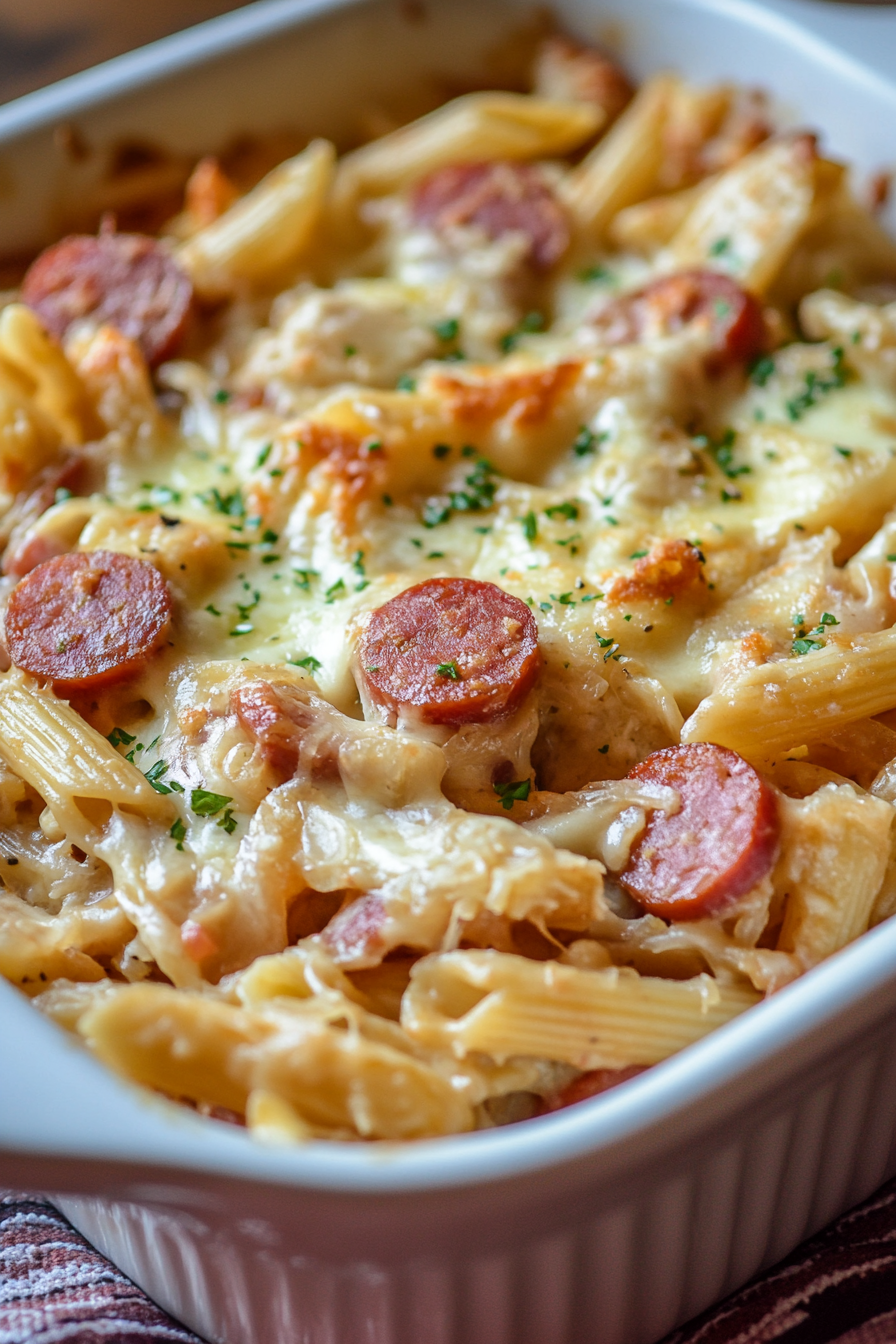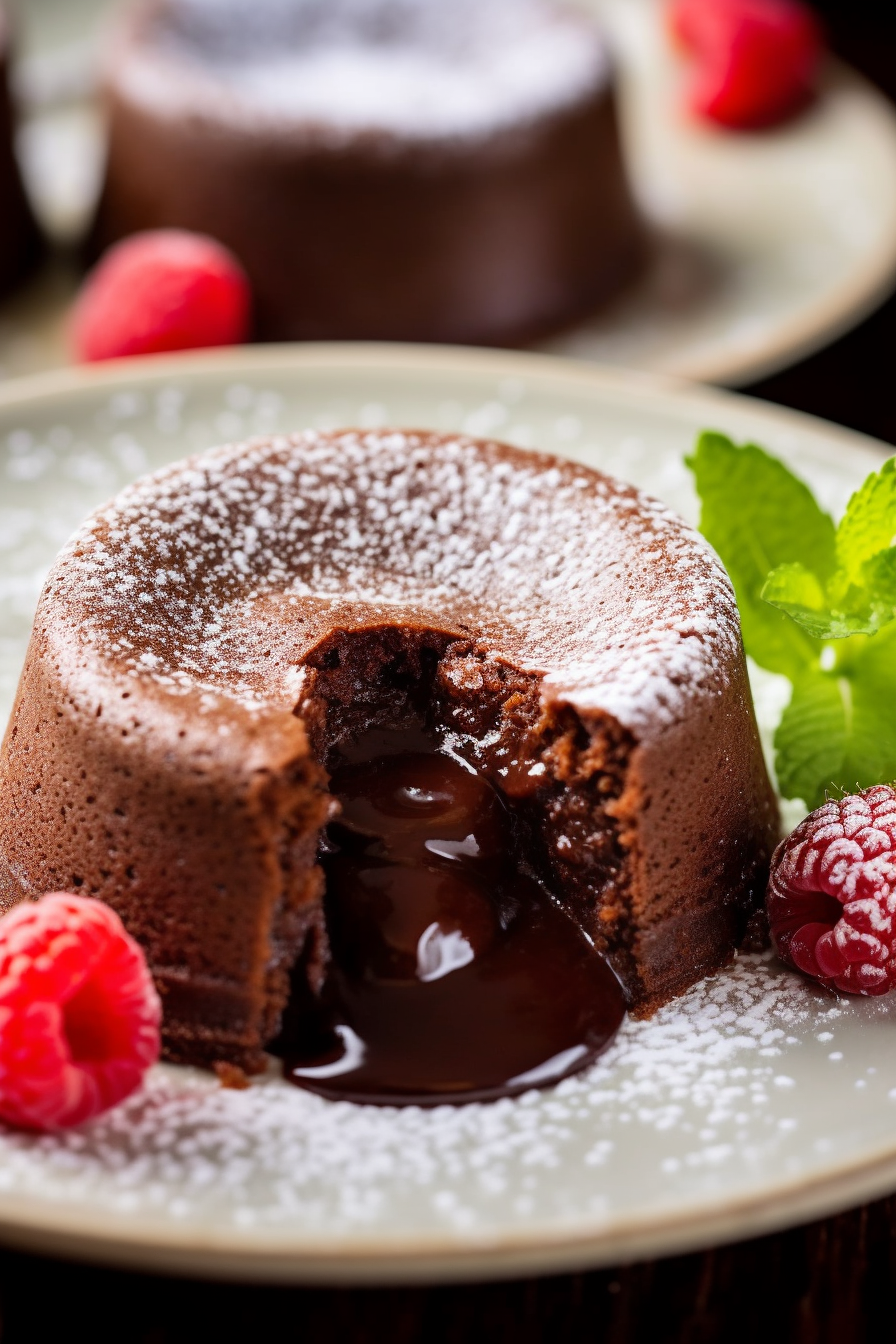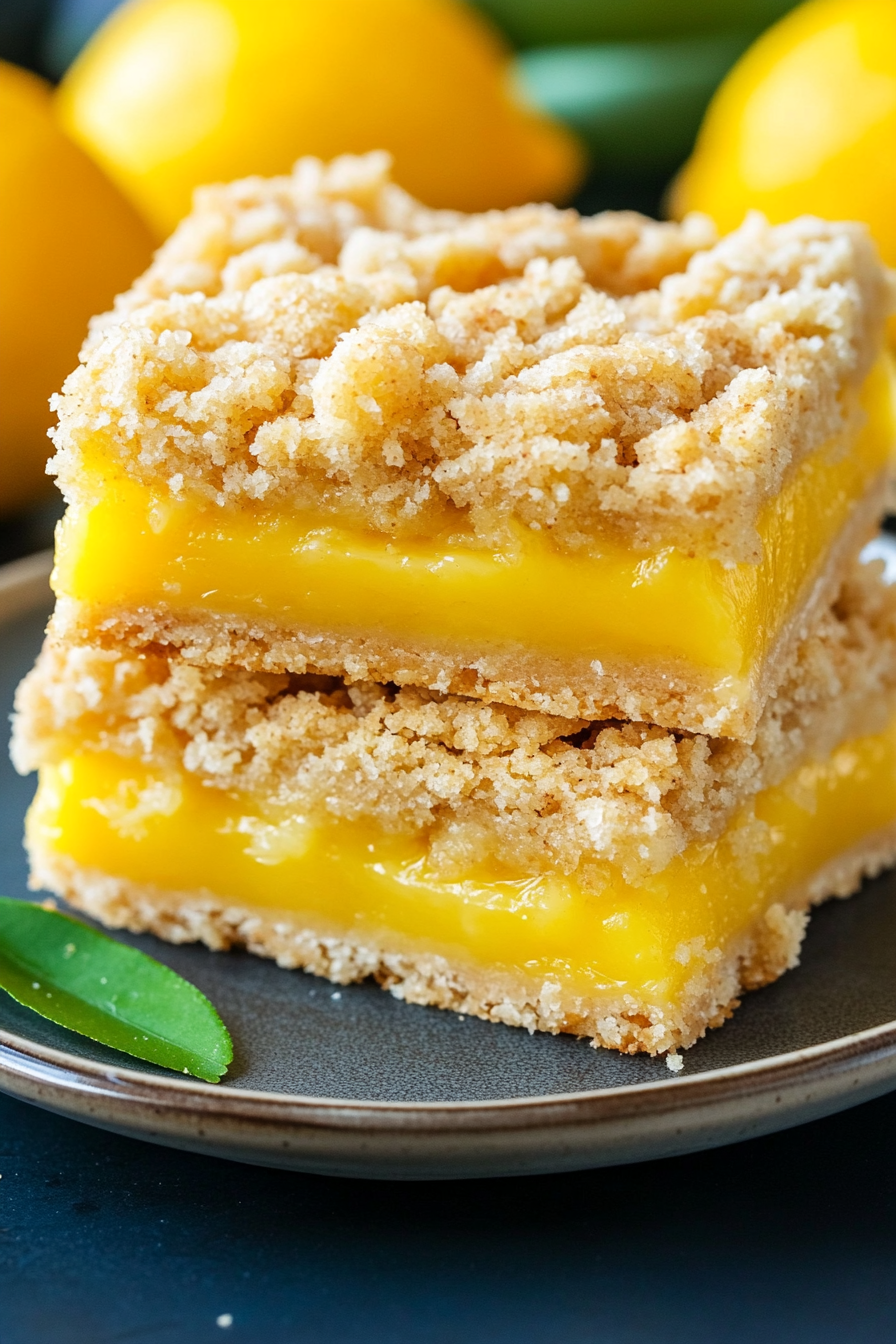Fluffy Japanese Cotton Cheesecake Recipe: Indulge in this light, airy treat featuring cream cheese, eggs, sugar, and a hint of lemon. Perfect for those craving a melt-in-your-mouth dessert experience!
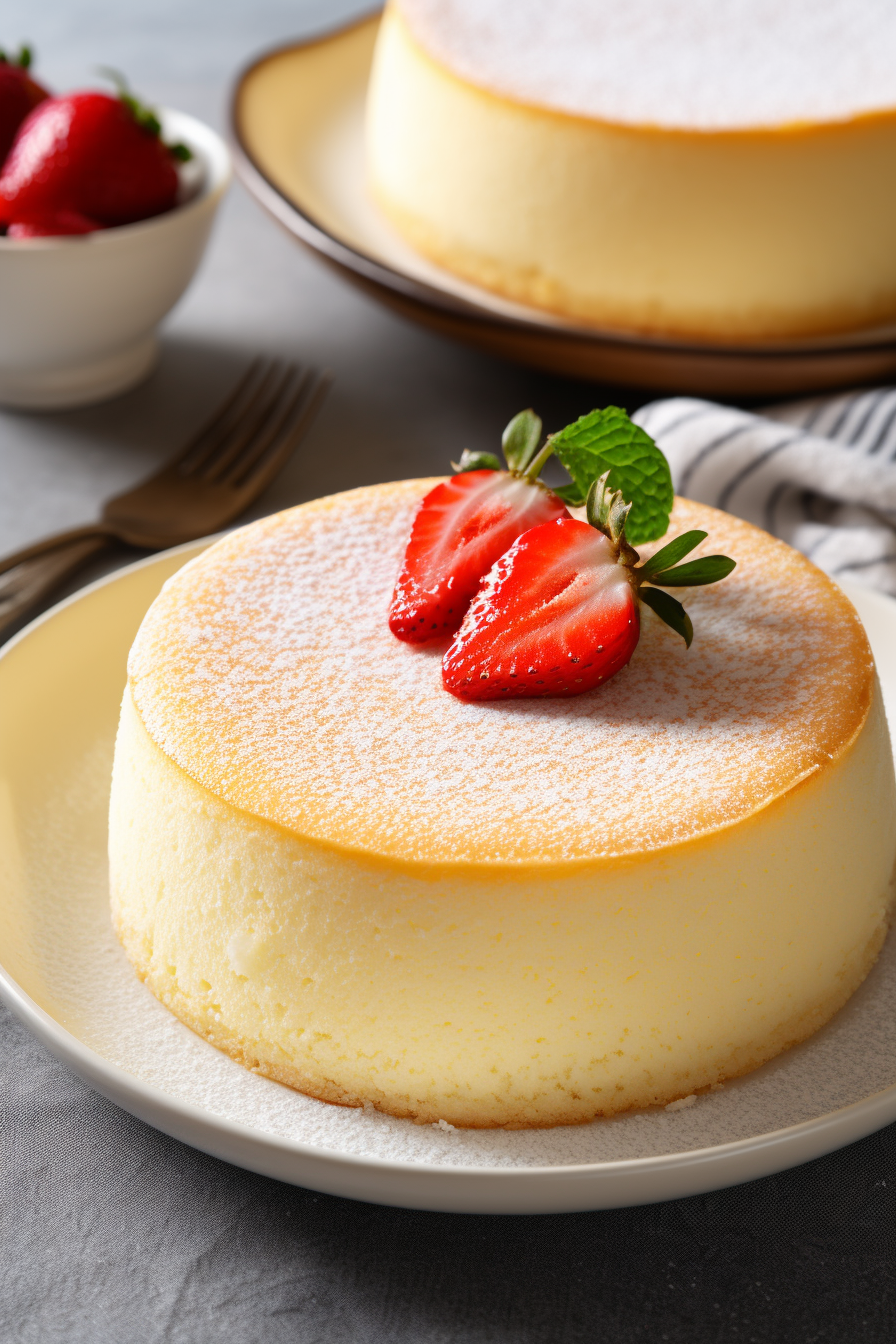
Remember the first time I stumbled upon a Japanese Cotton Cheesecake? It was a rainy afternoon in Tokyo, and I was seeking shelter in a cozy café. The waiter recommended their specialty – a slice of this jiggly, cloud-like cheesecake. One bite, and I was hooked! It reminded me of the fluffy clouds I’d imagine as a child. Since then, I’ve been on a mission to recreate that magical experience in my kitchen, tweaking the recipe until it was just right. Now, it’s a family favorite, and the go-to dessert for all our special occasions!
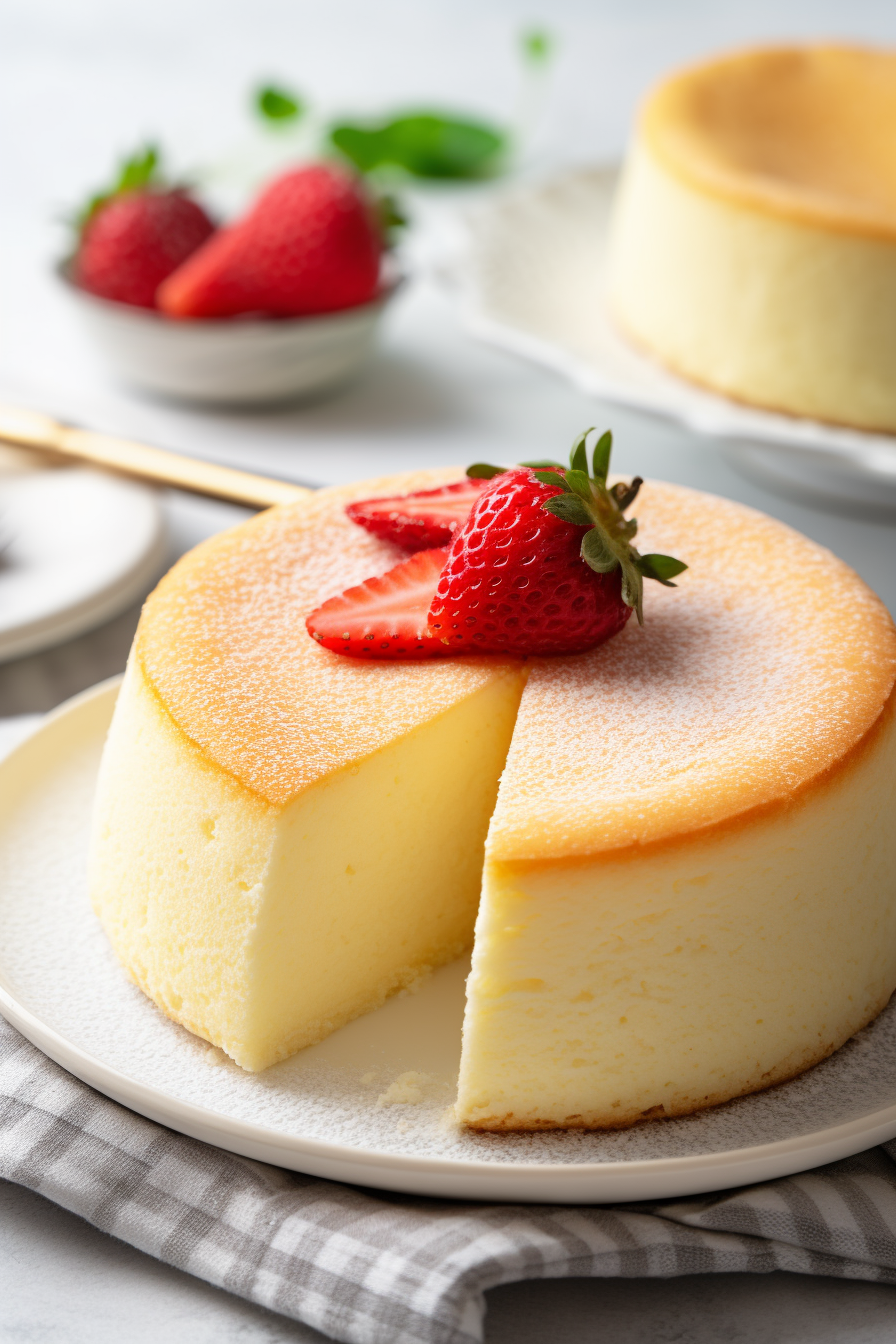
Why You’ll Love Japanese Cotton cheesecake
- Cloud-Like Texture: Unlike traditional dense cheesecakes, this recipe offers a light, airy texture that’s irresistibly fluffy.
- Perfect Balance of Sweetness: With the right amount of sugar, it strikes a delightful balance, not too sweet, but just enough to tantalize your taste buds.
- Visual Appeal: Its jiggly, golden top makes it a showstopper at any gathering.
- Versatile Dessert: Ideal for various occasions, from casual get-togethers to elegant dinner parties.
- Satisfying Yet Light: It’s rich in flavor but doesn’t leave you feeling heavy.
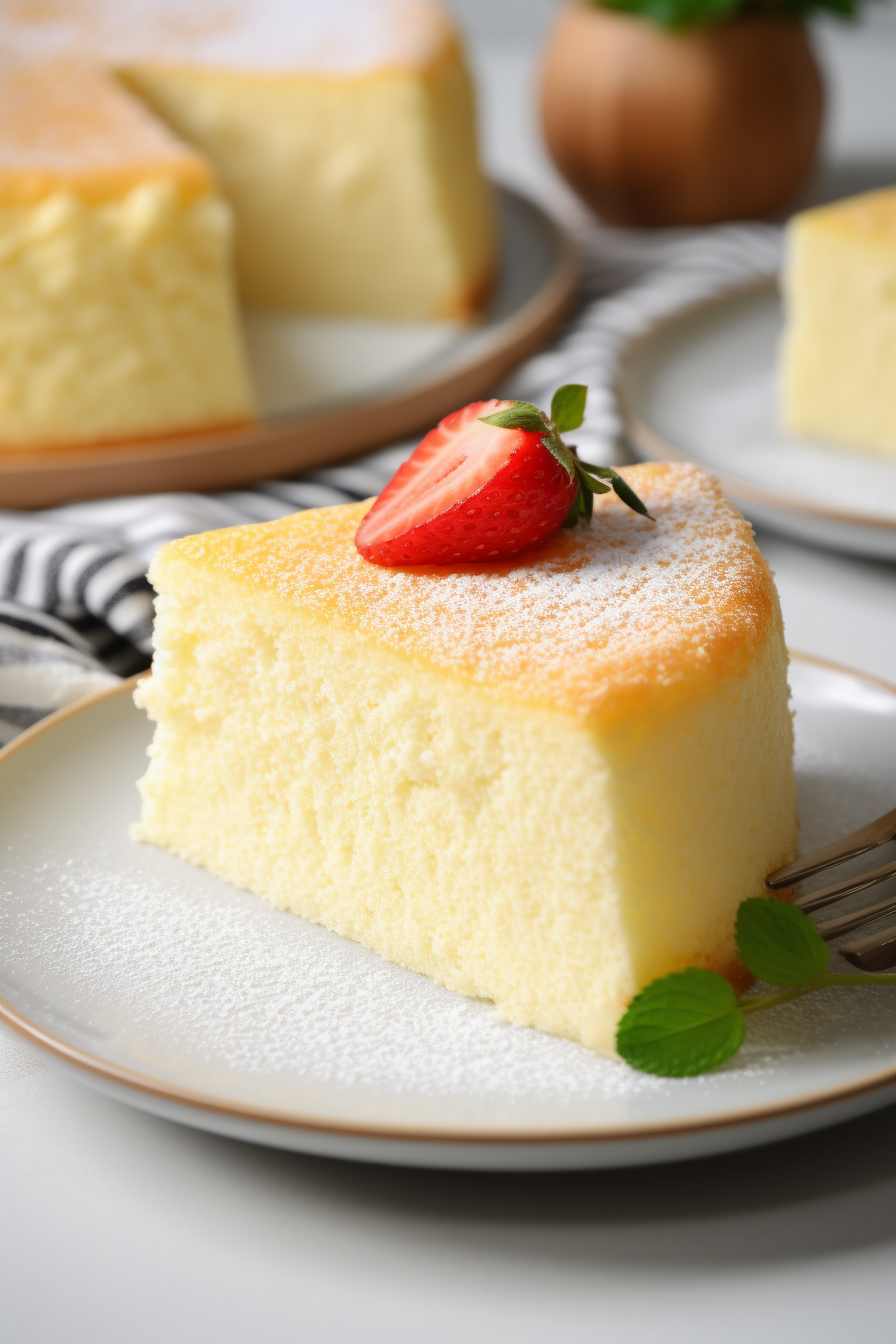
Ingredients Notes
Creating the perfect Japanese Cotton Cheesecake starts with understanding your ingredients:
- Cream Cheese: Use full-fat for that rich, creamy texture.
- Eggs: Room temperature eggs are crucial for a smooth batter.
- Sugar: Granulated sugar helps create the perfect sweetness and structure.
- Lemon Juice: A dash of lemon adds a subtle, refreshing zing.
- Flour and Cornstarch: These are your secret weapons for that light, cottony texture.
WANT TO SAVE THIS RECIPE?
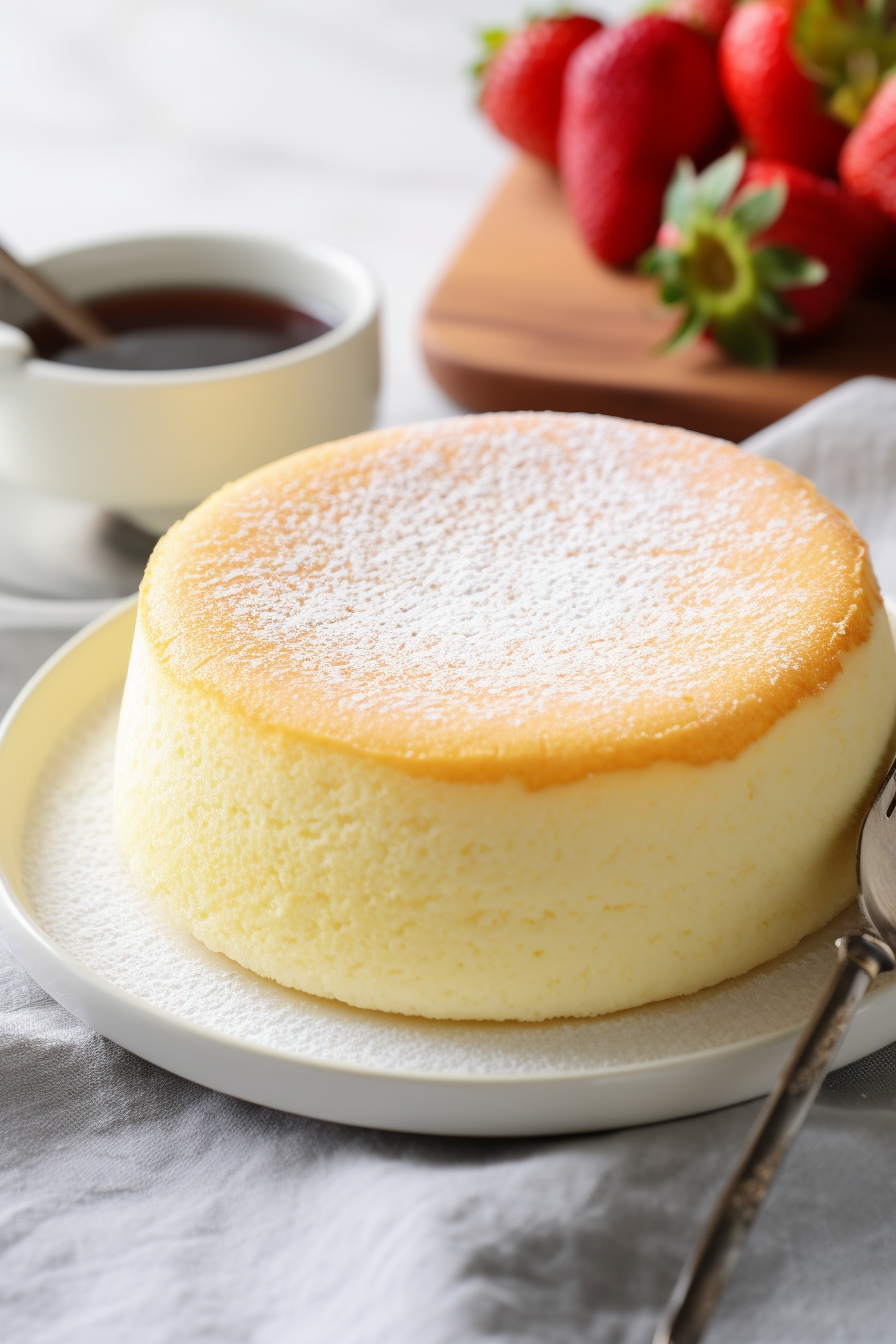
How To Make Japanese Cotton cheesecake
Crafting a Japanese Cotton Cheesecake is like conducting a symphony – every step is crucial to create a masterpiece.
- Oven Preparation: A well-preheated oven and a properly lined pan set the stage for your cheesecake.
- Melting the Base: Gently melting the cream cheese and butter is key to a smooth batter.
- Incorporating Egg Yolk and Vanilla: This enriches the flavor and adds depth.
- Sifting in Dry Ingredients: Ensures a lump-free, airy texture.
- Crafting the Meringue: The heart of the cheesecake, where air is gently folded in to give that signature fluffiness.
- Merging Meringue and Batter: A delicate process to maintain the airiness.
- Final Folding: Requires a gentle touch to avoid deflating the batter.
- Preparing the Pan: A water bath ensures even cooking and a moist texture.
- Baking Process: A three-stage baking process is key to achieving the perfect golden top and jiggly center.
- Cooling: A gradual cooling process prevents cracks and preserves the texture.
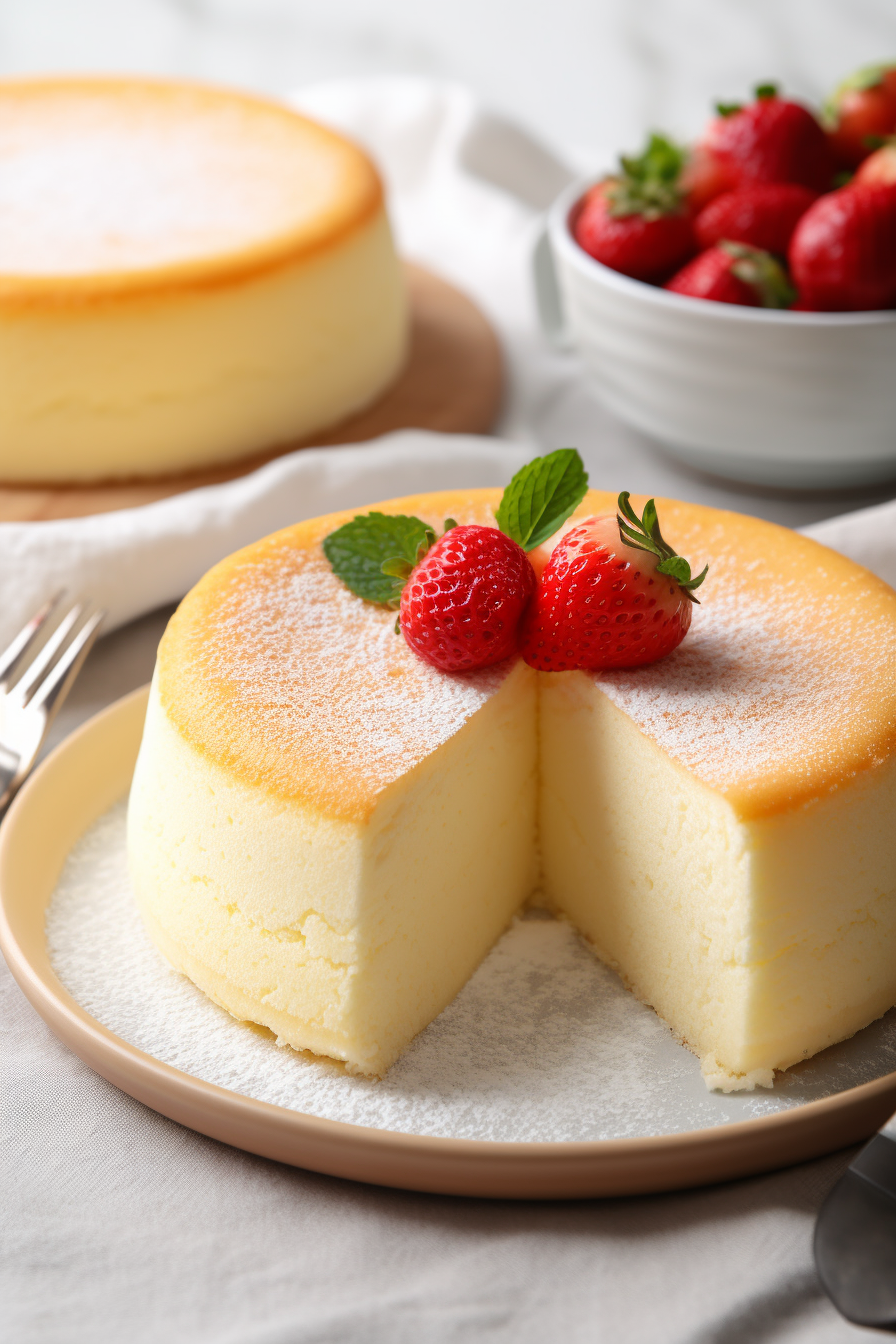
Storage Options
This cheesecake is as delicate in storage as it is in flavor. Refrigerate in an airtight container for up to 3 days. For longer storage, freeze individual slices wrapped in cling film. Thaw in the fridge for a few hours before serving. Remember, fresh is always best!
Variations and Substitutions
- Dairy-Free: Substitute cream cheese and milk with dairy-free alternatives.
- Gluten-Free: Use a gluten-free flour blend in place of cake flour.
- Citrus Twist: Add orange or lime zest for a citrusy flavor.
- Sugar Alternatives: Substitute granulated sugar with coconut sugar for a healthier twist.
- Chocolate Version: Add cocoa powder to the batter for a chocolatey delight.
- Toppings: Experiment with fruit, whipped cream, or a caramel drizzle for added flair.
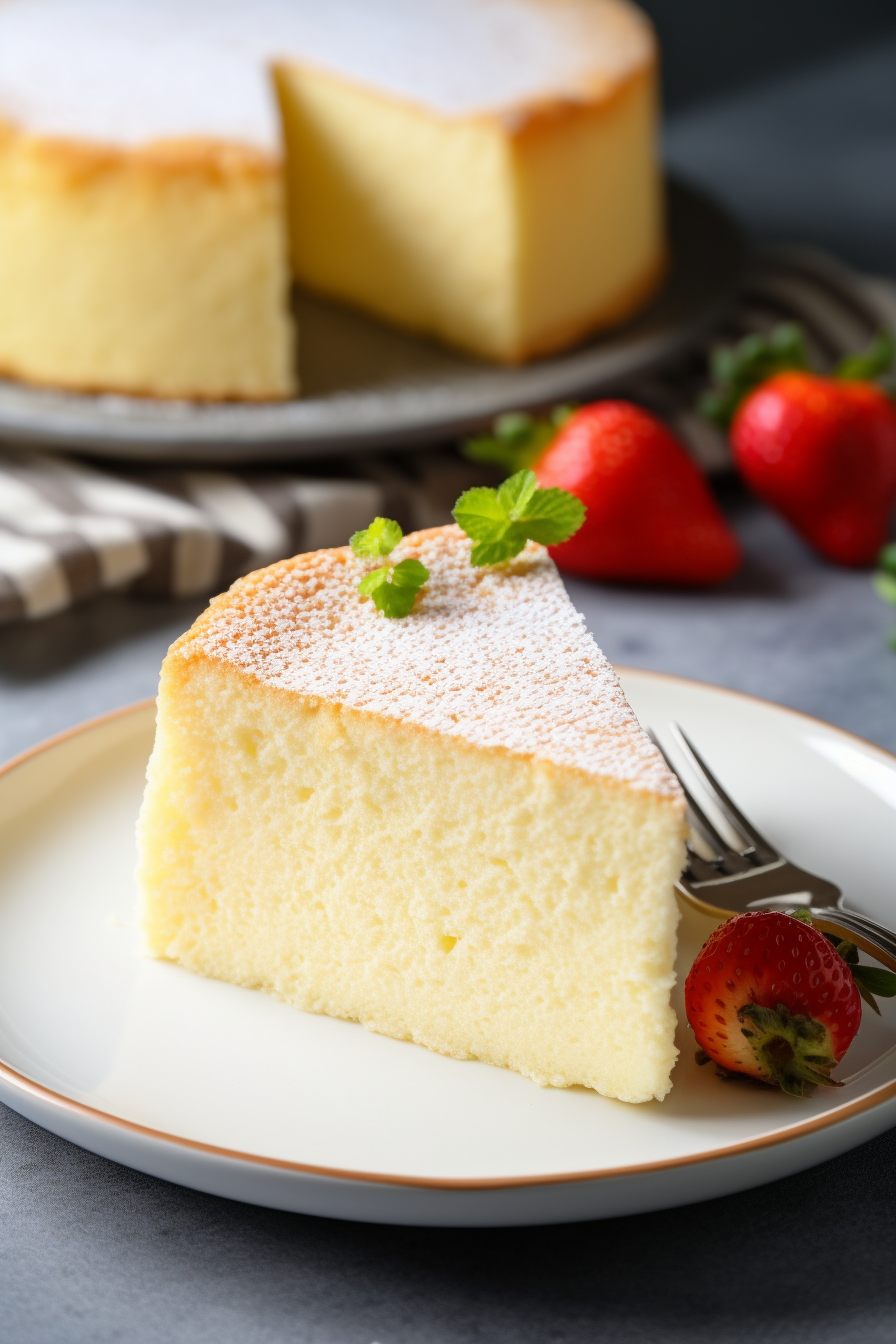
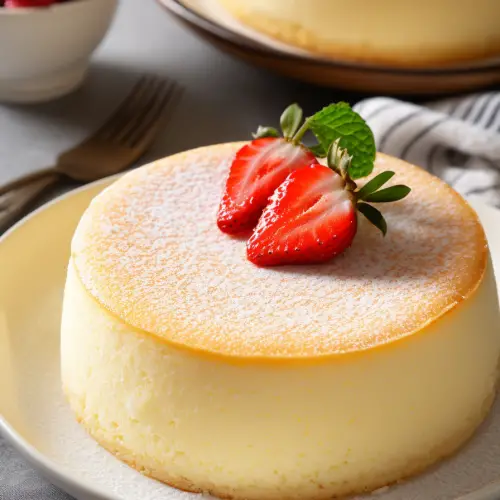
Japanese Cotton cheesecake
Ingredients
- 30 grams of cake flour
- 20 grams of cornstarch
- 180 grams of full-fat cream cheese
- 30 grams of unsalted butter at room temperature
- 50 grams of full-fat milk
- 3 large egg yolks at room temperature
- 2 grams of vanilla extract
- 3 large egg whites at room temperature
- 70 grams of granulated sugar
- 2 grams of lemon juice
- Powdered sugar for garnishing
Instructions
- Oven and Pan Preparation: Preheat the oven to 300°F (150°C). Line the bottom and sides of a 6-inch round baking pan with parchment paper.
- Melting Butter and Cream Cheese: Set up a double boiler by filling a small saucepan halfway with water and bringing it to a boil. In a mixing bowl that fits atop the saucepan, combine the cream cheese, butter, and milk. Whisk continually until the butter and cream cheese melt completely and the mixture reaches approximately 130°F (55°C).
- Incorporating Egg Yolk and Vanilla: Remove the bowl from the heat. Whisk in the egg yolks and vanilla extract until fully incorporated.
- Sifting and Mixing Dry Ingredients: Sift the cake flour and cornstarch into the mixture using a fine mesh sieve. Whisk until the batter is smooth, then pass the batter through the sieve again to ensure no lumps remain.
- Preparing the Meringue: In a large mixing bowl, combine the egg whites and lemon juice. Using an electric hand mixer, beat the egg whites on high speed until they become white and frothy. Gradually add one-third of the sugar while continuing to mix, then repeat with the remaining sugar in two batches. Beat until the meringue reaches medium soft peaks. Reduce the mixer speed to low and mix for an additional 30 seconds to eliminate large air bubbles.
- Combining Meringue and Batter: Gently fold one-third of the meringue into the egg batter until it is fully incorporated and smooth.
- Final Folding: Carefully pour the egg batter into the remaining meringue. Using a rubber spatula, gently fold until just combined, taking care not to over-mix and deflate the air in the batter.
- Pan Preparation: Pour the batter into the lined baking pan from a height of approximately 5 inches to eliminate large air bubbles. Place the cheesecake pan inside a larger, deep baking tray and fill it with about 1-2 cm of hot boiling water.
- Baking Process: Bake at 300°F (150°C) for 30 minutes. Then, lower the temperature to 230°F (110°C) and bake for another 30 minutes. Finally, increase the temperature to 275°F (135°C) for 13-15 minutes. Watch closely to prevent cracking. The cake is done when the top is golden and a toothpick inserted in the center comes out mostly clean.
- Cooling: Turn off the oven once baking is complete. Leave the cake inside for approximately 15 minutes with the oven door slightly ajar. Then, remove the water bath and let the cake sit in the oven for another 15 minutes to prevent dramatic temperature changes and shrinkage. Remove the cake from the tin and allow it to cool completely on a rack. Sift powdered sugar over the top before serving.

